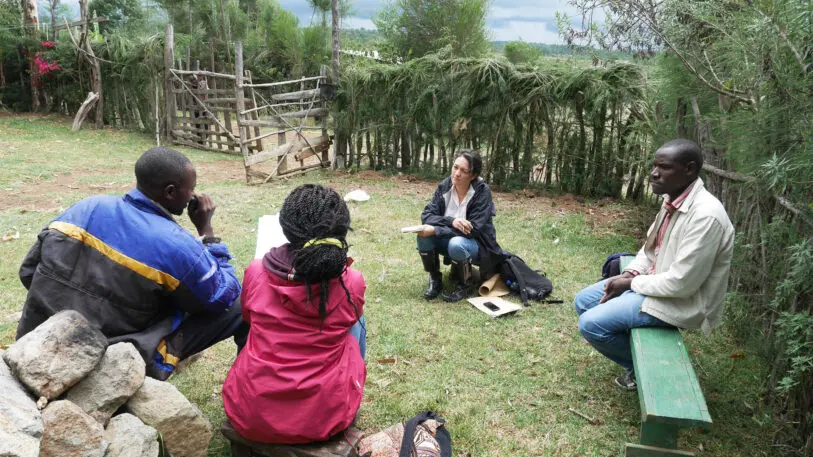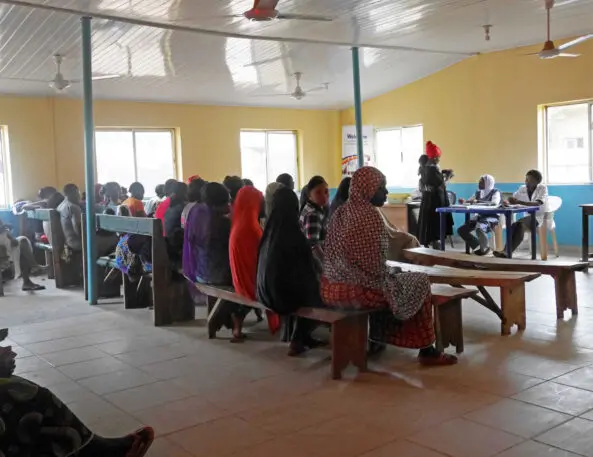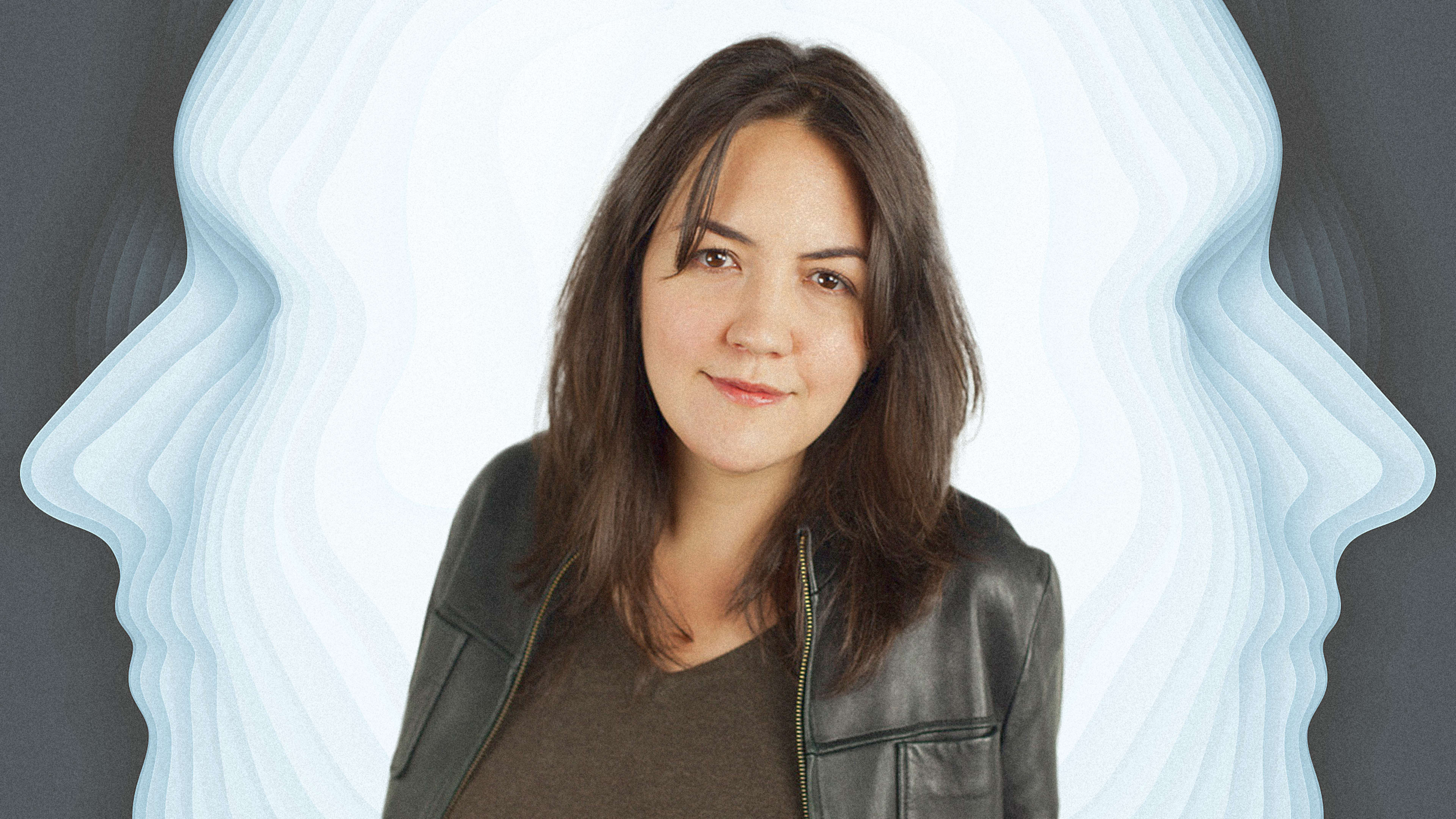Mehera O’Brien is a design director working at the intersection of product/ service design, business strategy, technology, and social impact. She has lived in Europe and Africa and served as a creative director for AKQA, Method, and Dalberg Design. She is currently based in NYC as head of creative at argodesign working with clients including Acumen, Linked Learning Alliance, Fox Factory, and AT&T. She spoke to Doreen Lorenzo for Designing Women, a series of interviews with brilliant women in the design industry.
Doreen Lorenzo: When did you start realizing you were interested in design?
Mehera O’Brien: I’ve been artistic since the beginning. As a kid, I liked every kind of fine art you can imagine, but I wasn’t great at all of it. I really wanted to go to college for fine arts, but I lost my courage to apply because my parents didn’t think it was a great idea, in part because my mother had been very artistic and wanted me to make money when I grew up. It wasn’t until my senior year at college that I understood that design existed and was something you could turn into a career. I had always thought of design more as graphic design which I’m not the best at. A few years later I ended up in a design firm as an information architect, but since I wasn’t a graphic designer, it took many years working in the design industry before I started thinking of myself as a designer.
You’ve had a career that spans the globe. How did you start doing projects in different parts of the world?
I ended up moving to Holland kind of on a whim honestly. A friend of mine was moving there and encouraged me to come. I was living in New York City working as an account manager for an ad firm. I learned a lot there but felt so clearly not among my people. I lived in Holland working for an internet consultancy for almost six years then moved back to New York for a job opportunity as a creative/UX director for a design company called AKQA. Around the time when Robert Fabricant was leaving frog to open up Dalberg Design, he brought me on as a creative director for the company working from Mozambique.

How do you balance social impact work with client work?
In my experience, social impact projects are more time-consuming. It takes time to align everyone and move through these programs to measure and evaluate them. Alternatively, there’s a certain rigor that goes into working very quickly for corporate clients that is sometimes lacking within social impact initiatives. There are fewer well-established designers and design protocols working in that space and making things. I wanted to still be able to do the design, research, and strategy, but I wanted to then be able to translate that into a tangible product or tangible service which isn’t as easy in the social impact space. At argo, we have a ‘think by making’ ethos. That’s a big opportunity in the social impact space, since the budgets tend to be smaller, the projects tend to take longer ,and the stakes are much higher because you’re typically dealing with vulnerable populations, so when you screw up, you’re doing real damage. I do not believe in the fail fast mentality. I believe more in a ‘find a way or make one’ mentality without leaving a trail of broken people behind you.

So often we’re solving the wrong problem. I think particularly as designers, if you’re getting hired and somebody identifies a problem, the first question is, ‘What are we really trying to solve?’
I certainly don’t claim to have it figured out, but there are many funders who want to support a certain kind of technology. It’s coming from a good place, but it’s not necessarily the problem to solve when you get on the ground in communities. I was on a program that focused on using satellite-based Internet resources to provide access to information through a Wi-Fi hotspot for Nigerian maternal healthcare clinics. Our job was to conduct qualitative research regarding the interface. The issue however was a lack of reliable resources to power the battery pack. So even if you had a Wi-Fi enabled phone, which most of these women did not, it couldn’t connect to the satellite due to an absence of charging power. It was an utter service design failure. I could have just provided interface design advice, but it really wouldn’t have mattered because I knew that there were all of these other accessibility problems that stood before that. Me and my team of designers were the only ones who were visiting some of these locations and if we hadn’t spoken up to identify the flaws, then who would have?

How can we promote more social innovation and equity-centered design on a global scale?
It’s a matter of education and opportunity. Having had the privilege to live in Africa and meet so many designers, one of the things I’m really passionate about now is lending my skills to social innovation programs. One of my mentees in Mozambique, named Guidione, put together this 24-hour conference directed at raising awareness for an online education scholarship. Guidione figured out through independent trialling which online educational resources are worth focusing on. Using scholarship money raised from a conference, he’s put together a collection of online education programs that could rival real world programs. The next piece of the puzzle is job opportunities after they’ve received this educational training. Argo ended up being a sponsor of this conference with Guidione, and we paid for the platform that allowed everybody to dial in and be a part of it. It’s also on people who are in a position to influence these conversations. I have hiring power in my studio, so I feel like the onus is on me to be hiring designers that reflect a more diverse design studio and make time to mentor designers from other countries rather than designers from my own country. Not that they’re not important, but they have other avenues. It’s about prioritizing the expansion of who is included in the field of design. It’s a conscious choice.
What advice would you give to aspiring designers with a desire to make a social impact?
Know it’s hard work. I don’t know if people who don’t work in design have romantic notions of social innovation and doing good in the world. Some of it’s really boring and tedious. Some days are really rough. When I was in Africa, there were days of not really eating because you’re out in the middle of nowhere traveling with two SUVs and dealing with checkpoints and security issues. One day we were in a health care clinic with a woman in a room nearby whose baby had just passed away. It was hard to go back to the hotel and do synthesis after that. The reality is, working in social innovation dealing with the complex nature of poverty is really hard. You need emotional resiliency when you do that kind of work.
But if the desire is truly there, just start. When my mentee Guidione first told me about the conference he wanted to organize, I could tell only a student naive to the amount of work that goes into running a conference would come up with this idea. Anybody with more experience would be like this is way too much work. But that was also the beauty of it. He pulled it off and had hundreds of people attend from all over the world. He was like, who am I not to do it? Everyone has that power if they choose to see it that way.
Recognize your brand’s excellence by applying to this year’s Brands That Matter Awards before the early-rate deadline, May 3.
